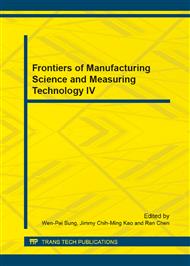p.1942
p.1946
p.1950
p.1954
p.1960
p.1967
p.1972
p.1976
p.1981
Research on Diffuse Optical Tomography System in Frequency Domain
Abstract:
In the past decades, the requirements of non-invasive, non-radiation in medical imaging diagnosis and treatment is much higher. Diffusion optical tomography (DOT) technology increases more widespread concern. In this paper, a system designed in the frequency domain for diffuse optical tomography (DOT) imaging is described. The experimental platform utilizes 660nm laser modulated to 100MHZ, 16 parallel positions of detection at which a photomultiplier-tube is placed to detect flux of light on the external periphery of the tissue-simulating phantom made by gelatin. The reconstructed image of the absorption and scattering coefficients are obtained by using the Levenberg-Marquardt (L-M) reconstruction algorithm to solve for the optimal fitness between the measurement data and calculated data. This paper puts forward a new method that calculates the flux of area on the external periphery of the model by the forward algorithms to reduce the measurement error, which is caused by the mismatching between the flux of area the photomultiplier detects and the flux of dot the forward algorithms calculate in the traditional method. The experimental result shows that the proposed method can improve the reconstructed image of absorption and scattering coefficients
Info:
Periodical:
Pages:
1960-1966
Citation:
Online since:
August 2014
Authors:
Price:
Сopyright:
© 2014 Trans Tech Publications Ltd. All Rights Reserved
Share:
Citation:


